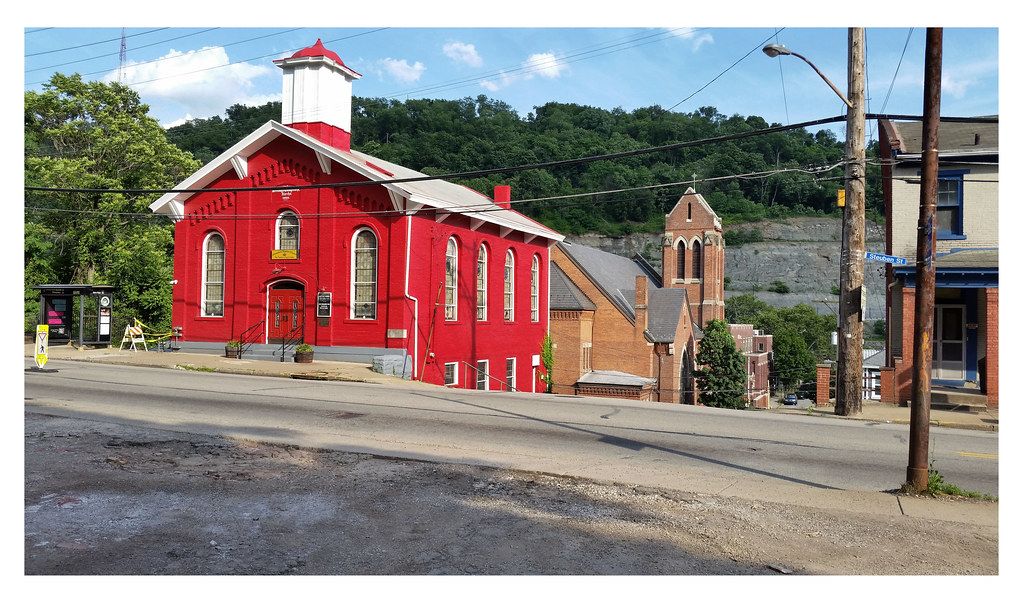Evictions in Pittsburgh
A Most Livable City


Source: evictionlab.org
The lack of housing affordability and access to safe, quality housing in America are problems of an astounding scale, and their negative impacts bleed into so many areas of life, such as healthcare, food access, schools, infrastructure, and people's ability to get to work. Evictions also disparately impact women, children, and people of color.
Interest in evictions rose sharply in recent years, especially with the publication of Matthew Desmond's Evicted and work of the Eviction Lab at Princeton University. This groundbreaking work contributed to the understanding of evictions as a cause, not a consequence, of poverty. Pittsburgh is even one of the 31 cities that has active eviction tracking.
But 5 years after the publication of Evicted, what has changed? What does the picture of evictions look like in Pittsburgh, "the most livable city"?
The court system in the US prioritizes property rights over the the human right to housing.

Many renters are cost-burdened, and as a result, low-income people spend a greater percentage of their incomes on housing than high and median income earners. With just 9% of their incomes left after paying for basic needs, low-income renters are struggling.
High and median income earners are also more likely to be spending their housing money on a home they own - meaning their monthly housing costs contribute to their own equity in the long run.

Between April 2020 and August 2021, there was an eviction moratorium, causing the number of evictions to drop to 0 for months. Now, Allegheny County evictions are increasing again. (Lord, 2022)
Evictions haven't reached their pre-pandemic levels yet, in part due to the Emergency Rental Assistance Program, a federally funded program that provides rent assistance for up to 15 months to households that lost income due to COVID-19. These funds will run out, but in the meantime, they've helped 5,442 families with children stay in their homes. (Allegheny County DHS)
71% of Allegheny County's ERAP recipients have been female heads of household, and 61% have been people of color.
Successful public programs like ERAP prove that when we invest in housing stability, it works!

Low-income renters need housing-related assistance. This chart shows the reasons people contacted 211, which is an easy-to-remember phone number that connects people in need to health and human services.
While landlord-tenant issues specifically are a relatively low percentage, housing issues overall cause many calls for help.

Allegheny County has been a remarkably profitable place to own property over the last few years. In 2021, the average home sold for $162,000 more than its original sale price - roughly a 116% increase in property value.
Meanwhile, the average eviction filing is for roughly $1,600.
This means property owners collect capital gains almost 100x the amount their evicted tenants owe on average. (Dataset provided by the Create Lab at CMU)
Nationally, homeowners see an appreciation of roughly 4% per year. Here in Allegheny County, people who have sold homes since 2010 have seen an average appreciation of 8% per year. (Smyth, 2021)

Pittsburgh-area landlords are making more money renting out worse housing than most of the country, too. The average age of housing stock is 39 years in the US, but in Pittsburgh, the median owner-occupied house was built in 1957, and the median renter-occupied house was built in 1949. In low-income areas, the houses are even older. (Pittsburgh Housing Needs Assessment, 2016.)
Mapping eviction reveals that it is part of a pattern of inequity in Pittsburgh's neighborhoods that has gone unchanged for nearly 100 years.
These 10 zip codes have the most evictions in Allegheny County. The darker reds have the most among those 10.
7 of the 10 zip codes have a higher percentage of Black residents than the county at large. The second map includes the outlines of the same 10 zip codes.
This is consistent with a national pattern. Across the US, Black renters are twice as likely to be evicted compared to white renters. (Arnold, 2021)


Evictions are immensely harmful to the predominantly low-income renters who experience them.
We should take action to make them less common if we are serious about being "the most livable city."

What can we do about evictions?
There are programs that work, even in landlord-friendly Pennsylvania.
Philadelphia used to be one of the top cities for eviction per capita. In 2020, city council piloted an eviction diversion program that was successful and became law in January 2022.
Now, before a landlord can evict a tenant, they are required to participate in the program, which includes mediation and legal representation for the tenant. As of February 1, 2022, all tenants facing eviction are provided with counsel. (Phillytenant.org)
We can advocate for tenant protections and the implementation of an eviction diversion program here, too. Call your City Council rep's office!
Find data about Allegheny County evictions, as well as housing and other public services on the County Department of Human Services website.
Philadelphia's tenant programs are a promising practice. Learn more about how tenants are protected.
"Eviction Refugees Camp Berlin" by Libertinus is licensed under CC BY-SA 2.0
"Pittsburgh" by real00 is licensed under CC
Arnold, Chris. 2021, June. NPR. "Corporate Landlord Evicts Black Renters At Far Higher Rates Than Whites, Report Finds"https://www.npr.org/2021/06/03/1001404416/corporate-landlord-evicts-black-renters-at-far-higher-rates-than-whites-report-f
"Pittsburgh West End Church" by real00 is licensed under CC BY-NC 2.0
"abstract orange" by zen is licensed under CC BY-NC-SA 2.0
"CENTURY OLD HOUSE" by whologwhy is licensed under CC BY-NC-SA 2.0
"Locked Gate" by Michael Kappel is licensed under CC BY-SA 2.0
Lord, Rich. 2022, January. PublicSource. "Steady rise in eviction filings shows stresses in the Pittsburgh-area rental market" https://www.publicsource.org/eviction-pittsburgh-allegheny-county-affordable-housing-covid-19-rental-assistance/
Smyth, Danielle. 2021, February. SF Gate."How Much Do Homes Increase In Value in 10 Years?" https://homeguides.sfgate.com/much-homes-increase-value-10-years-100948.html
Pittsburgh Housing Needs Assessment. 2016, May. https://apps.pittsburghpa.gov/dcp/Pittsburgh_Housing_Needs_Assessment.pdf
